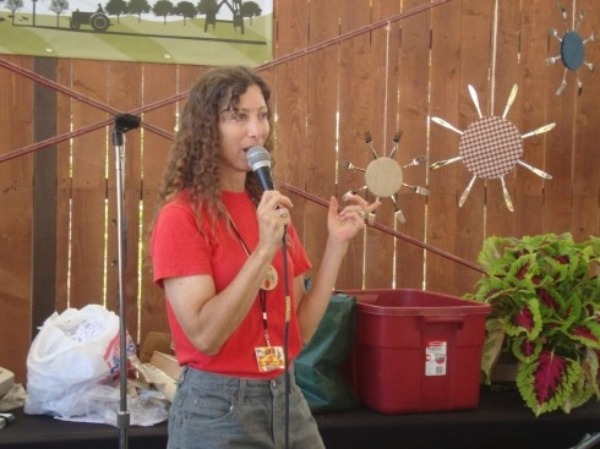
Back in the day, any food scraps were delivered to the family pig, or fed to the chickens.
Today, no one has a pig, and we now know that chickens, although cute and friendly, are no longer an option unless you live in designated areas where chickens are permitted by code, or secretly tolerated by neighbors.
First, a little about the need and the issues. The difference between garbage and trash is wet vs. dry. Garbage contains organics, trash does not. Organics are anything that was once living, typically food scraps or landscape clippings. The element that necessitates weekly household refuse pick up is the organics, by order of the health and safety code.
Organics are a big deal, here and all over the country. Currently, our nanny state that legislates behavior mandates a 50 percent diversion rate. Diversion is the amount diverted from going into the landfill. Like Mother Theresa, who advocates the positive by going to peace marches but avoiding anti war rallies, a better way to describe diversion is a 50 percent recovery rate. Many believe our state will increase the rate. So, we have a process in place to recover the bottles, cans, glass, metals, cardboard and plastics that have markets to accept and recycle them.
The next largest chunk to go after is organics.
Once organics hit the landfill, they create problems, mostly by releasing methane as they decompose. Some companies have developed solutions to capture methane and convert it to electricity or natural gas, but the situation can be avoided.
Removing organics from the waste stream is possible by adding a dedicated container or extracting from a materials recovery facility, where all our garbage is taken. But that can be cumbersome and expensive.
The better solution is source reduction and the method is at-home composting. Reduce is first in the Reduce, ReUse, Recycle mantra for a reason. If we prevent the organics from entering the waste stream, then we do not have to deal with downstream issues, and we can create a beneficial use with an outcome of compost to amend our soil. Old school.
Recently I visited Fairview Park in Costa Mesa for a well-attended composting workshop put on by Dr. Francene Kaplan, sponsored by a grant from OC Waste and Recycling. Kaplan, the self proclaimed “Priestess of Rot” is a schoolteacher by day, and at all other times, oozing passion and knowledge for the adoption and benefits of composting.
Composting is the natural breakdown and decomposition of organic materials. It reduces our municipal solid waste volume and disposal costs and yields humus, a dark, soil like material also known as compost. Compost has numerous uses, but typically is used to amend soil. All we are doing is mimicking nature. What would nature do?
Here are some highlights. To start, you need to get informed. I will not go deep in specifics, as there are plenty of resources for the newly inspired.
To begin backyard composting, all you need is a compost bin. It is often best to start with a small pile from a friend’s bin, and add greens and browns to get the desired ratio. Add plenty of water, stir the bin every two weeks or so. Remember to keep adding fresh material regularly.
VermiComposting is done with worms that are vegetarians and love to eat fruit, vegetables, tea bags, coffee grounds. They don’t like meat, dairy or grease. And no, you cannot fish with them.
At the workshop, Kaplan provides pro tips and encourages experimentation with on-the-job learning: “At the end of the year, your failed experiments will be at the bottom of the pile.”
She is asked about things you can put in like orange peels, grass, etc.
“Think of it like a box of See’s candy” shares Kaplan, “a couple pieces are good. The whole box, not so good.”
When asked about animals: “Animals are smart, you need to be smarter.”
We are lucky in that any location will do. Porch, side yard. Sun is OK, but wind is a challenge. As long as the pile does not dry out.
Kaplan was questioned on adding things like toilet paper rolls that might have glue. “Personal preference” was the answer. She encouraged participants to consider where and how the compost would be used. “Will you be eating things grown in it, or is it for your flowers?”
Inspired to compost? Good. Free Composting Workshops will be held at Fairview Park, next to Estancia High School, in Costa Mesa, on March 11 at 10 a.m.. April 1 at 11 a.m., and May 5at 10a.m. Bring your own chair. Visit cmsdca.gov, click Recycling tab. Video; sierraclub.org/composting. Worms and bins Enricos.com or VermiPro.com. Or walk into Roger’s Gardens and let them help you get started.
As Kaplan says, “Composting is a pile of fun!”
Thoughts? JimFitzEco@gmail.com





That was an interesting and informative post, composting is not only advantageous for the plants but also for the environment. What better way than using natural ingredients in place of fertilizers.